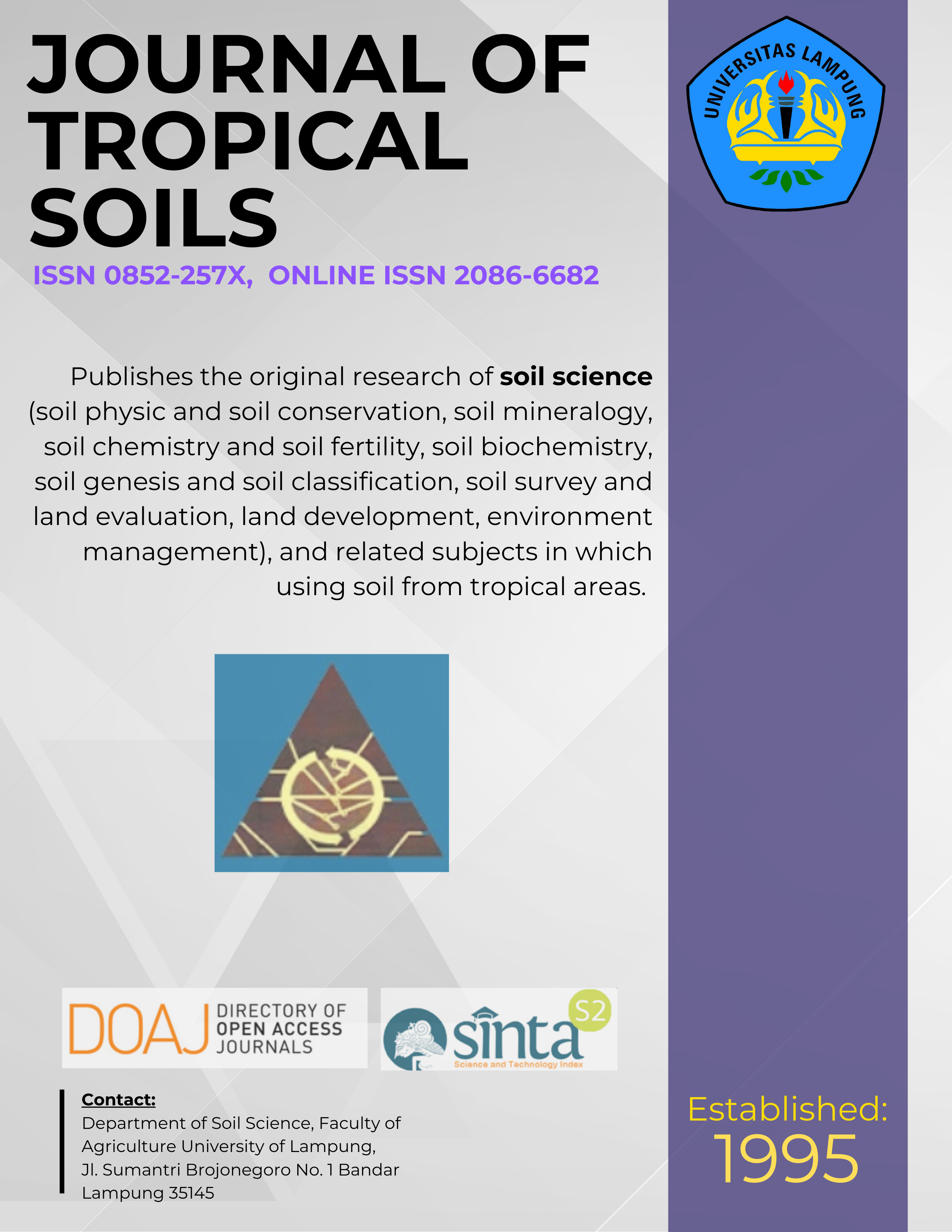Response of Peanut due to Application of Dolomite Plus
Main Article Content
Abstract
Most developing areal for peanut crop (Arachis hoypogeae) is upland, that is dominated by parent soil and has acid
characteristis. Main constraints for this soil are pH and low soil productivity. Dolomite plus is a dolomite ameliorant,
with phosphate nutrient. The dolomite plus beside as the ameliorant and a source of magnecium and calcium
nutrients, also as a source of phosphate nutrient. The objective of the research was to study effectivity of dolomite
plus on peanut growth in Inceptisols soil. This research was conducted in the greenhouse using a randomize
completely designed with 8 treatments and 5 replications. The treatments were control, NPK, and combinations of
NPK with six dolomite plus levels. Relative Agronomic Effectiveness (RAE) analyses was used determine to the
effectivity of dolomite plus. The result showed that application of dolomite plus 1,600 kg ha-1 with NPK fertilizer
increased dry weight of grain yield untill 27% (11.53 to 14.65 g plant-1) compared to NPK fertilizer application alone,
that was showed by RAE > 100% or among 171-251%. Application of dolomite plus with NPK increased soil pH, soil
available P (Bray 1), Ca and Mg exchangeable, and CEC as 1.9 unit; 6.2 mg kg-1; 15.87 cmol(+) kg-1; 14.27 cmol(+)
kg-1; and 17.29 cmol(+) kg-1 respectively. Maximum rate of dolomite plus was 2,500 kg ha-1 with the yield was 14.2 g
plant-1 grain dry weight. The rate of dolomite plus that was higher than 2,500 kg ha-1 could decrease the yield
[How to Cite: Sutriadi MT and D Setyorini. 2012. Response of Peanut due to Application of Dolomite Plus. J Trop Soils 17: 143-150. Doi: 10.5400/jts.2012.17.2.143]
Â
[Permalink/DOI: www.dx.doi.org/10.5400/jts.2012.17.2.143]
Downloads
Article Details
Issue
Section
License for Authors
Authors who publish with this journal agree to the following terms:
- Authors retain copyright and grant the journal right of first publication with the work simultaneously licensed under a Creative Commons Attribution License that allows others to share the work with an acknowledgement of the work's authorship and initial publication in this journal.
- Authors are able to enter into separate, additional contractual arrangements for the non-exclusive distribution of the journal's published version of the work (e.g., post it to an institutional repository or publish it in a book), with an acknowledgement of its initial publication in this journal.
- Authors are permitted and encouraged to post their work online (e.g., in institutional repositories or on their website) prior to and during the submission process, as it can lead to productive exchanges, as well as earlier and greater citation of published work (See The Effect of Open Access).
License for Regular Users
Other regular users who want to cite, distribute, remix, tweak, and build upon author’s works, even for commercial purposes, should acknowledge the work’s authorship and initial publication in this journal, licensed under a Creative Commons Attribution License.

